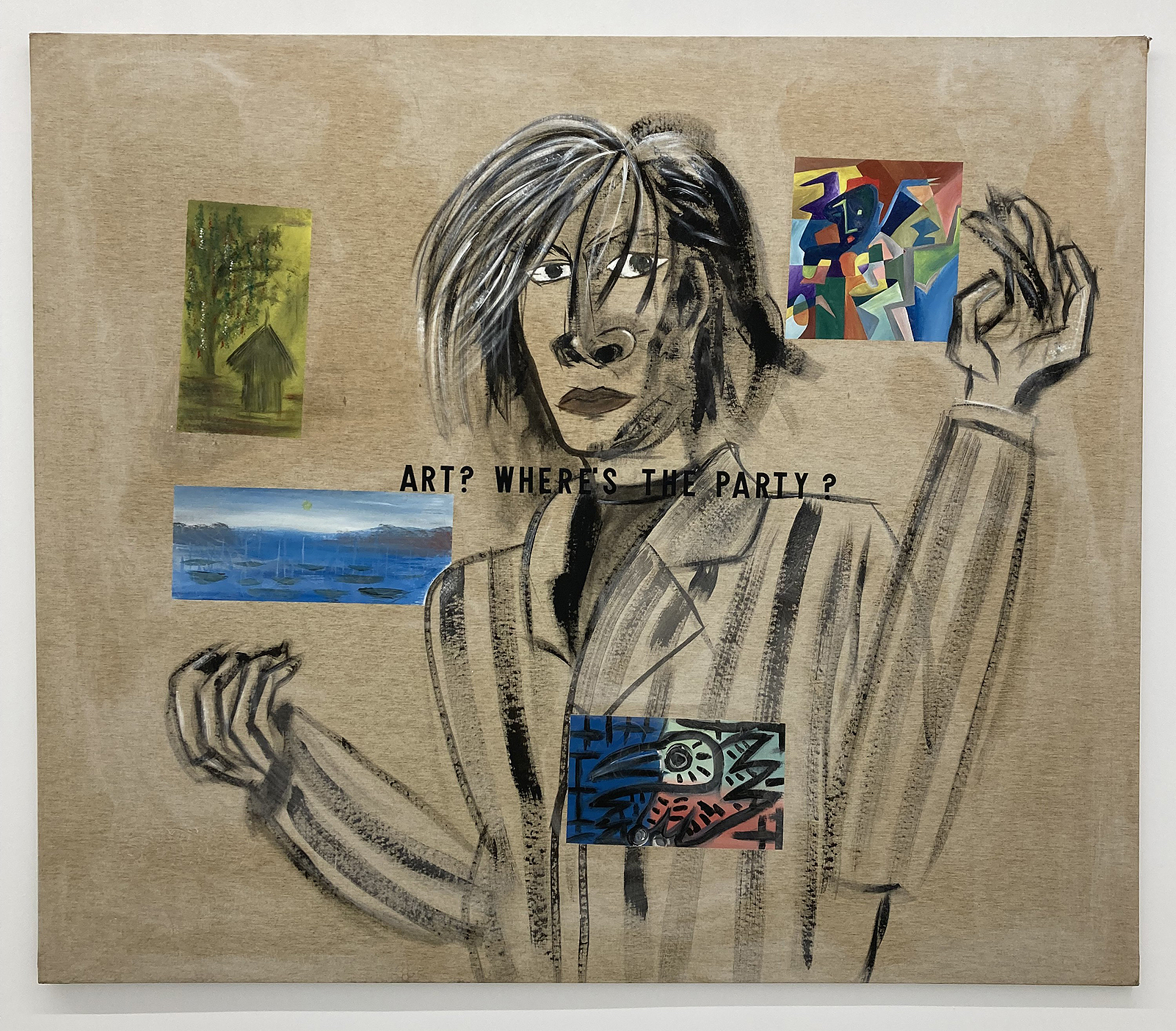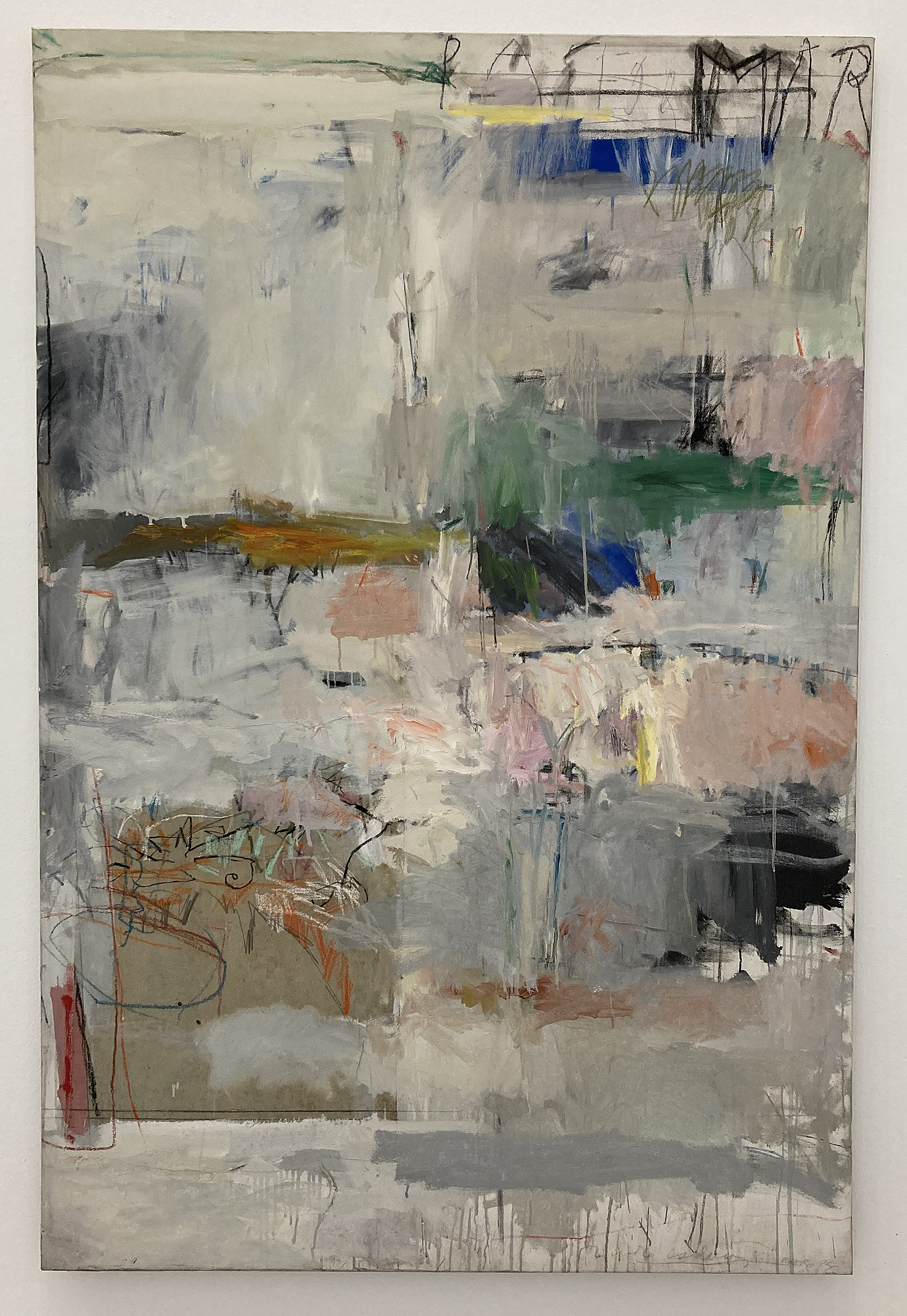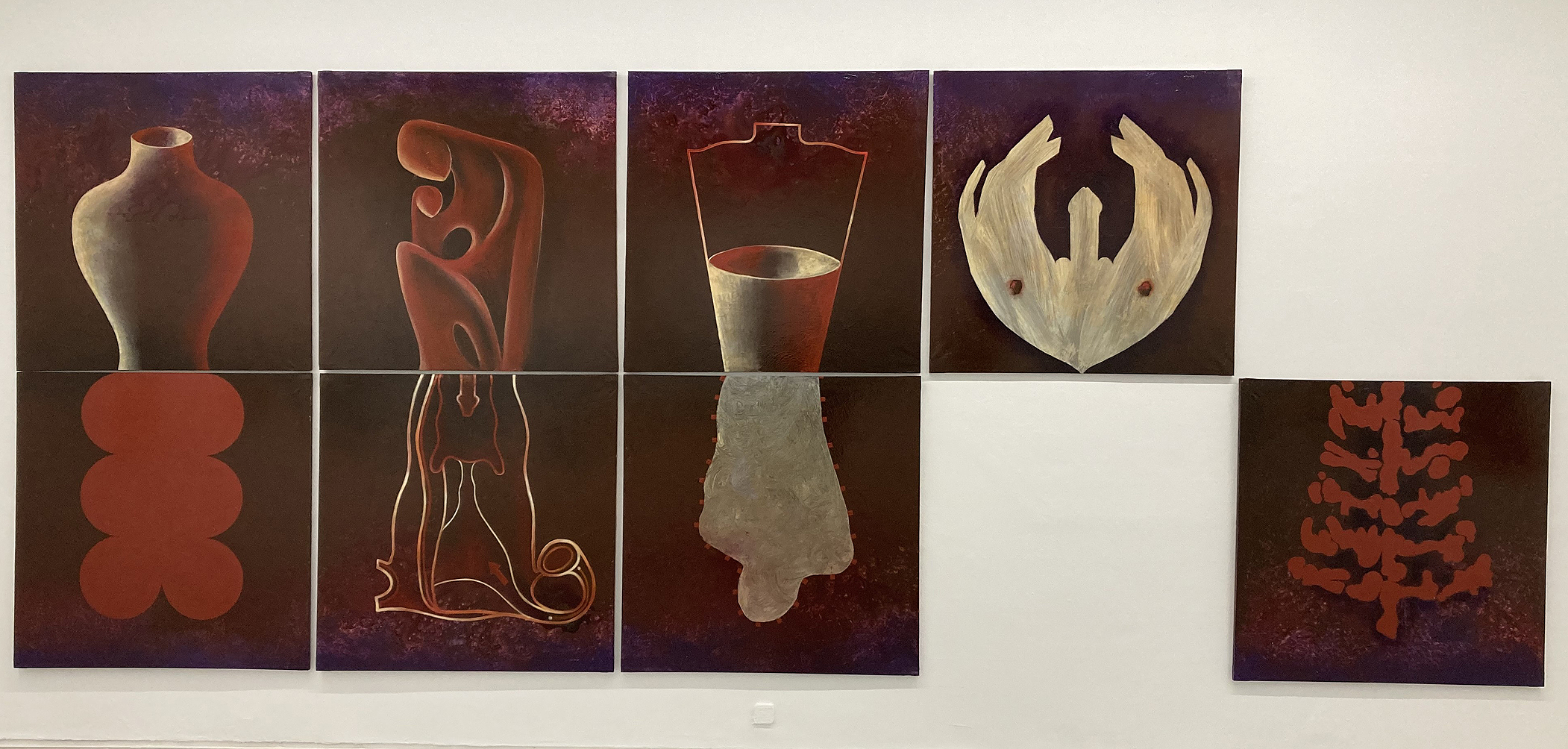![]()
The
Spanish Machine.
Pepe Cobo Donation
Dates: October 29, 2021 - March 20, 2021
Curator: Laura Revuelta
Coordinator: Javier Corro Olmo
Space: South Cloister
“A new art gallery for Seville. Three painters and a dealer. The three painters are Ricardo Cadenas, Gonzalo Puch and Patricio Cabrera. The gallery opened its doors with an exhibition featuring the work of these three talented artists; their oils will be on view until 6 December, when this first show at La Máquina Española is scheduled to close.”
So began the press release for the inaugural exhibition of a gallery and a gallerist who launched a revolution of Spanish art from the city of Seville in late 1984. The gallery, as readers will already have inferred, was cleverly called La Máquina Española (a name borrowed from one of Quevedo’s political satires), and the equally clever gallerist was Pepe Cobo. At that time, in the early 1980s, Seville was in desperate need of a coup de théâtre, a jolt, a seismic shake-up to turn the hoary conventional canons on their head. And along came a group of young art ists who decided to storm the art world and hang the consequences, and another young man from a more conservative background, a genuine Spanish señorito born and bred, who loved breaking the rules and, like Quevedo, mocking himself and others. Pepe Cobo could think of no better prank than to open an establishment that combined the best of both worlds, the good and the bad, for better or for worse. The most outstanding Andalusian art of those years filled the rooms of La Máquina Española under Pepe Cobo’s iconoclastic baton. Not only did those artists shatter the repressive moulds of Sevillian tradition, which they devoutly respected in their own way, but they also became the chamions of exporting Spanish art to the rest of the world. Up until that point, Spain’s contemporary artists had hardly been seen or heard of beyond the Pyrenees.
This exhibition takes the name of La Máquina Española (though not in vain) and surveys its history, from the moment the gallery opened in 1984, through its two initial periods of activity in Seville, until 1988, when Cobo created a second venue in Madrid. The works displayed in these rooms—by Rafael Agredano, Patricio Cabrera, Ricardo Cadenas, Pepe Espaliú, Federico Guzmán, Guillermo Paneque and Antonio Sosa, all artists who exhibited there— are part of the donation that Pepe Cobo made to the collection of the Centro Andaluz de Arte Contemporáneo. The proposed itinerary revisits the revolution of the Spanish art world that La Máquina Española started in the late 20th century, transforming a city and a nation through art.
Laura Revuelta, curator
ADDITIONAL DOCUMENTATION |


